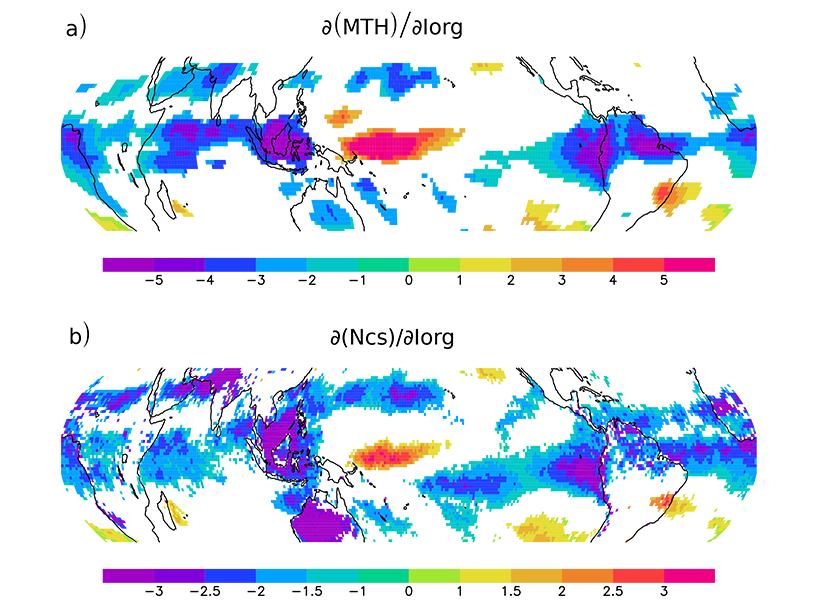Source: AGU Advances
It is of great importance to understand what controls the tropical radiation budget, as it offers guidance on estimating the climate sensitivity to greenhouse gas increase. It is well established by both observations and climate models that the tropical radiation budget is significantly influenced by lower-atmospheric stability. More recently, modeling studies have suggested that the degree of cloud clustering could also influence the radiation budget. Bony et al. [2020] present the first observational study that confirms the influence of convective clustering on the radiation budget at the scale of the tropics. More clustered deep convection is associated with an enhanced radiative cooling as the free troposphere is drier and more heat is emitted to space. The observations reveal that lower-atmospheric stability and convective clustering are complementary and equally important for modulating the tropical radiation budget. This emphasizes the importance of determining how the stability and the cloud clustering will change with future warming.
Citation: Bony, S., Semie, A., Kramer, R., Soden, B., Tompkins, A., & Emanuel, K. [2020]. Observed modulation of the tropical radiation budget by deep convective organization and lower-tropospheric stability. AGU Advances, 1, e2019AV000155. https://doi.org/10.1029/2019AV000155
—Sarah Kang, Editor, AGU Advances
Text © 2020. The authors. CC BY-NC-ND 3.0
Except where otherwise noted, images are subject to copyright. Any reuse without express permission from the copyright owner is prohibited.

